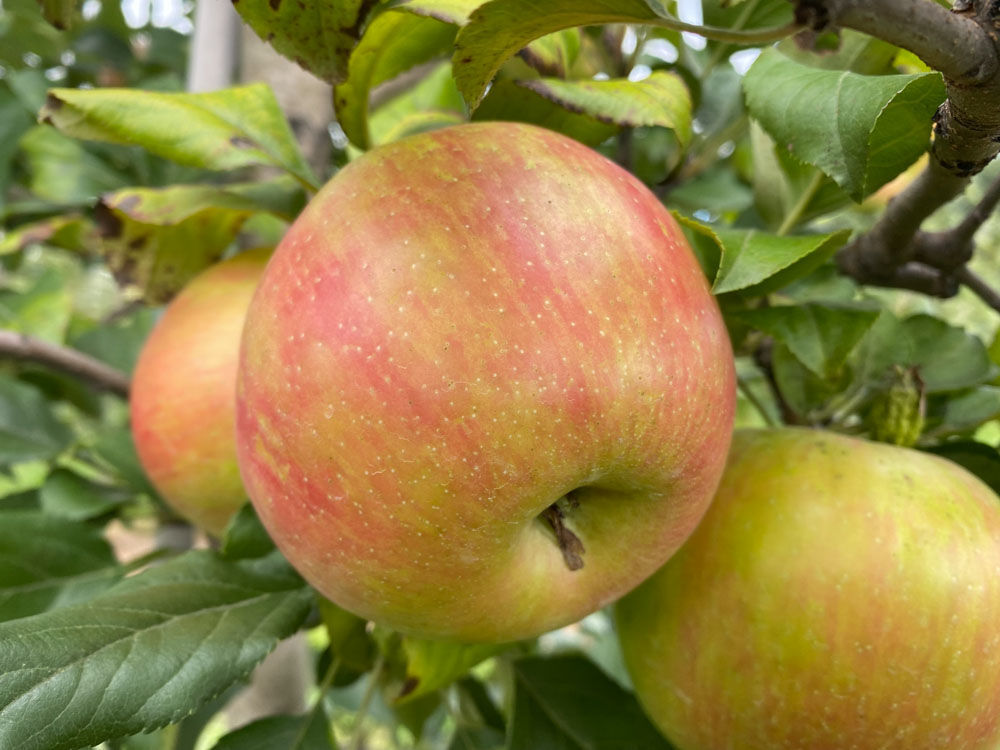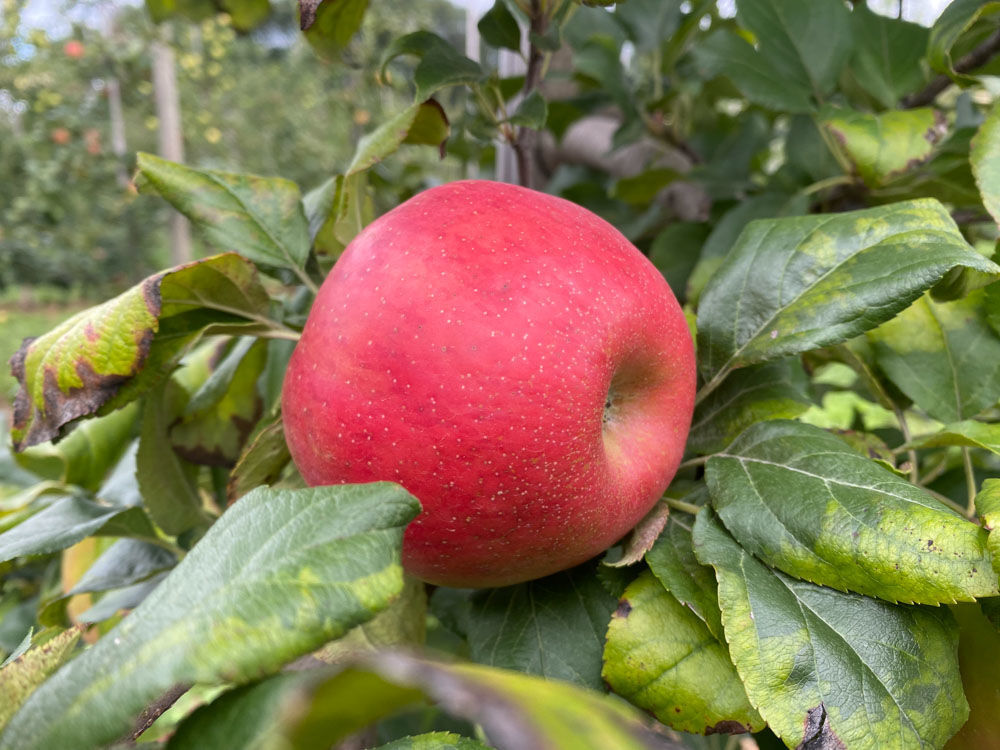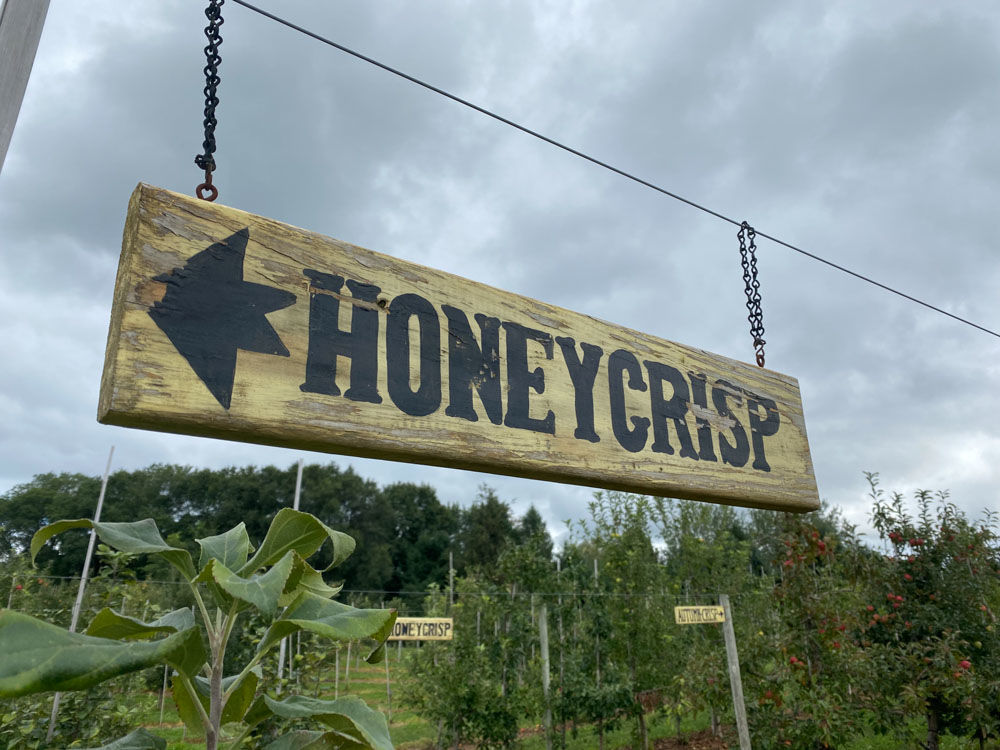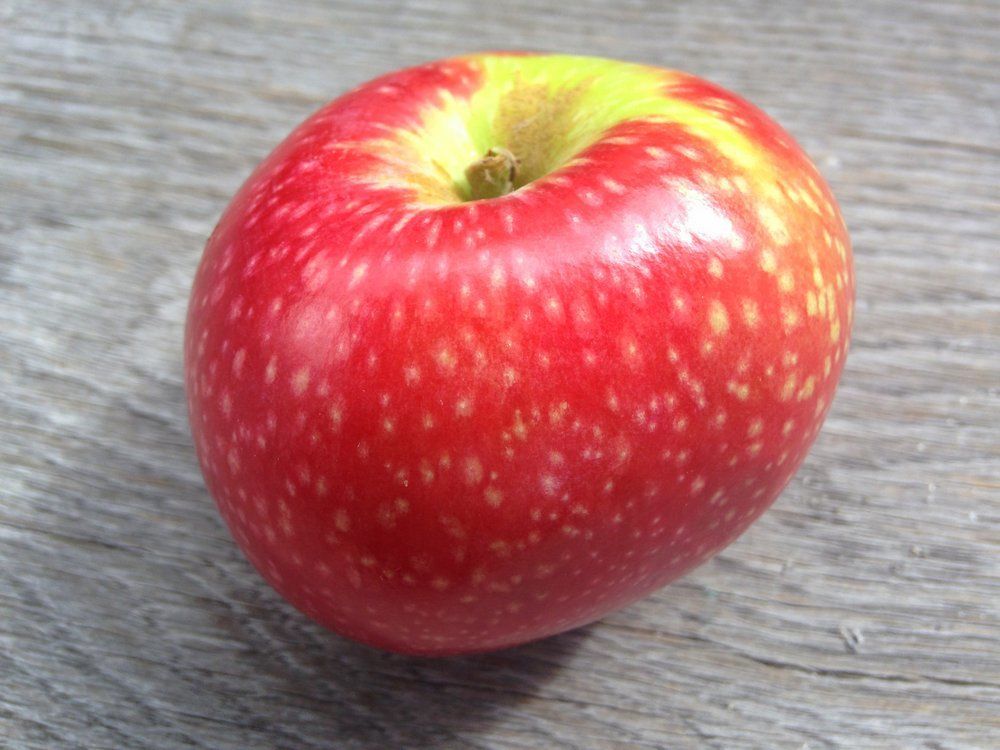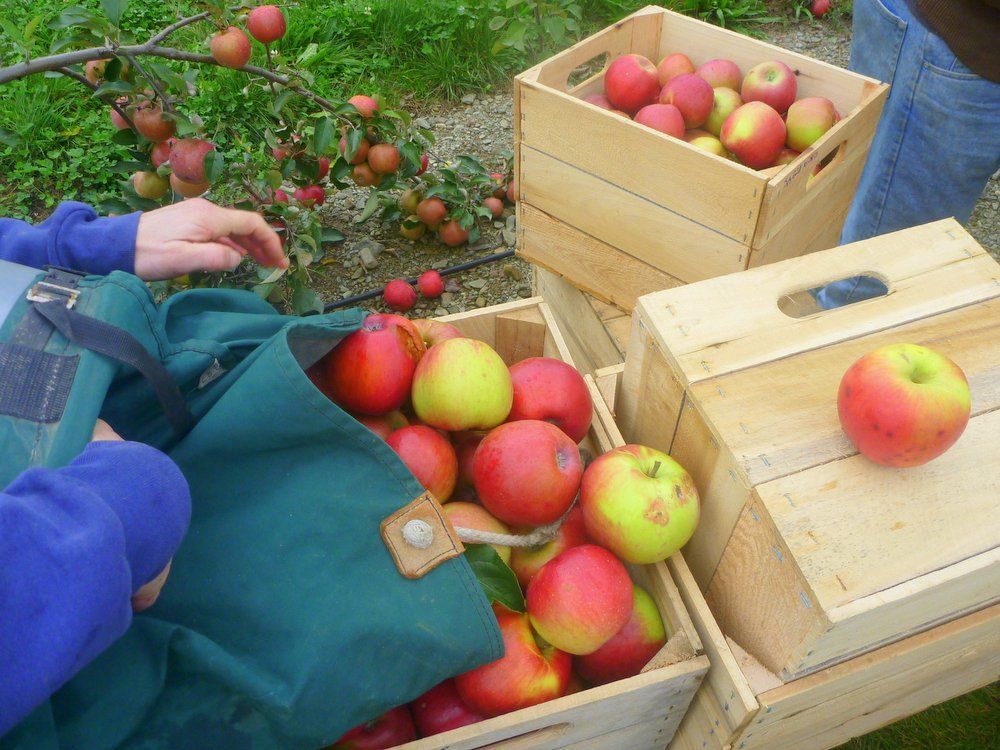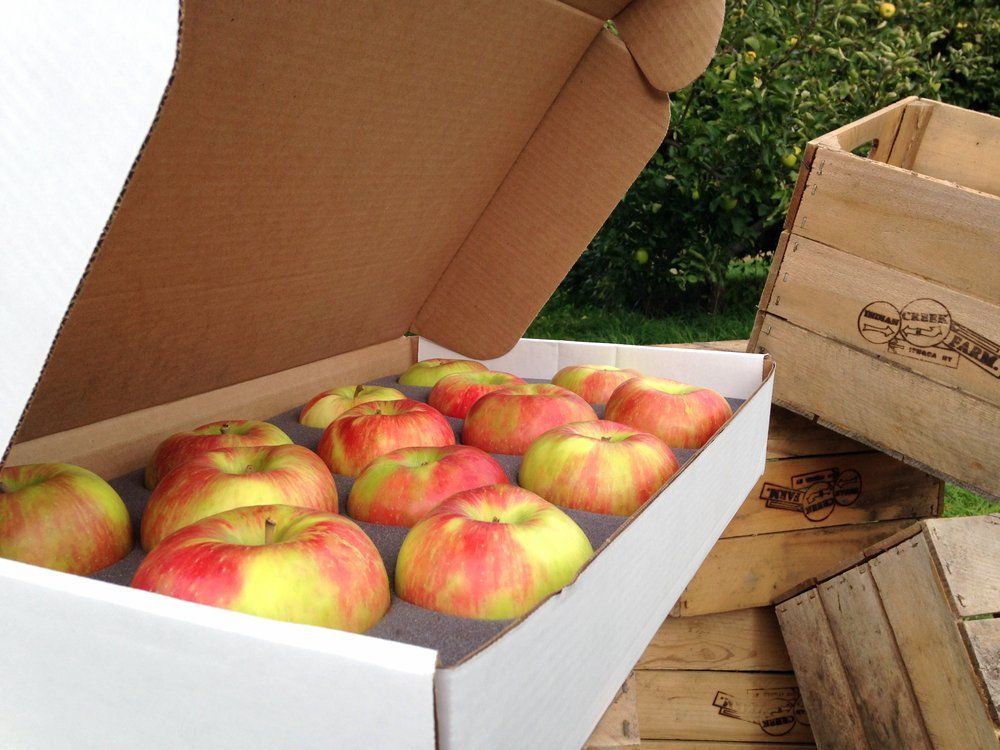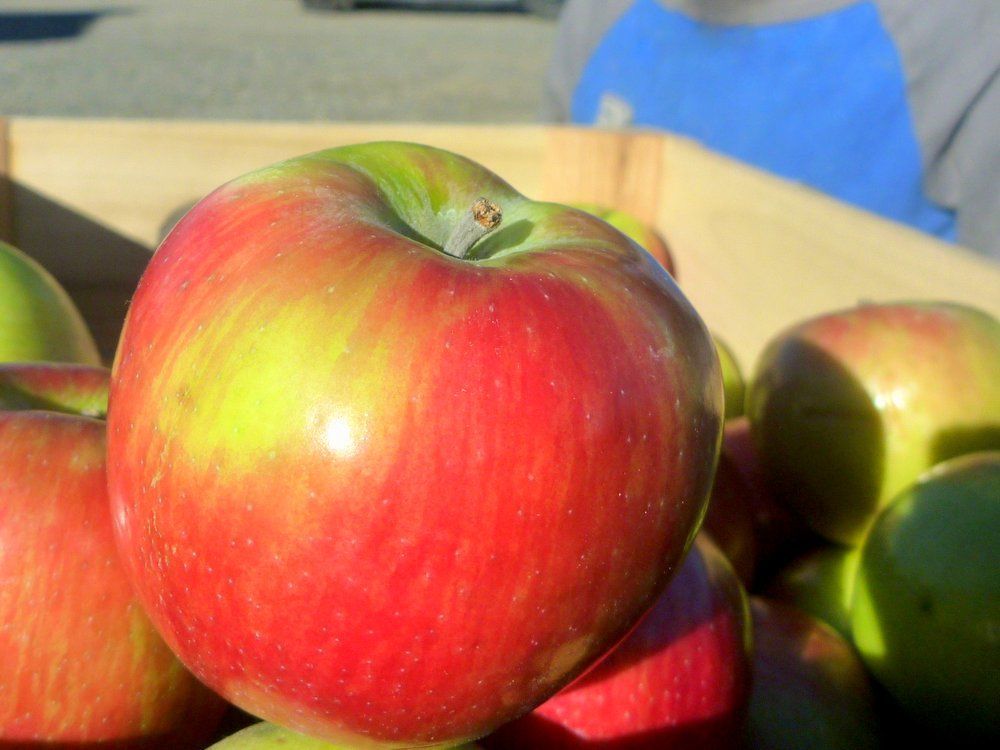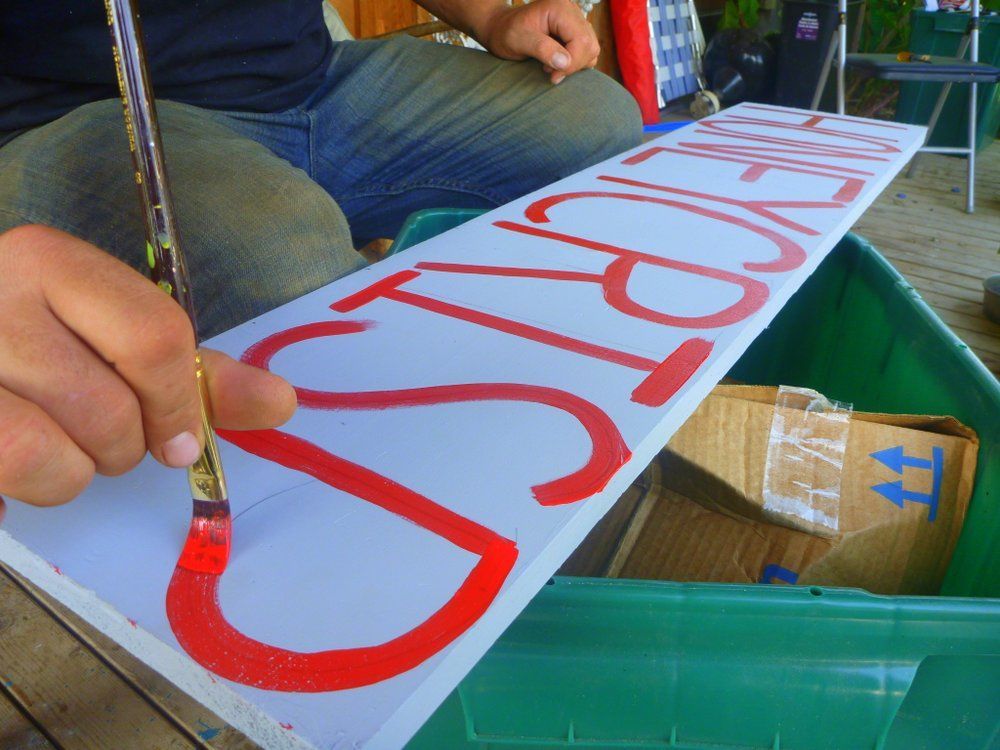An attractive, highly disease-resistant apple, ideal for organic growers.
Honeycrisp Apple Scionwood (Spring 2024)
The rock-star, cold-hardy apple from Minnesota. Also known as Honeycrunch.
A somewhat spreading tree, Honeycrisp is moderately resistant to fireblight and scab, but susceptible to cedar-apple rust, bitter rot, bitter pit, and powdery mildew. Honeycrisp can be a tricky tree to grow, especially on account of its low vigor, and some commercial growers recommend fully defruiting the tree for the first three years to avoid growth stalling out later. In higher density orchards, renewal pruning with cuts that leave a 1" stub can also be a successful strategy for promoting new growth. Crops should be thinned for best fruit quality and to forestall dropping. The best Honeycrisp apples will be produced in colder climates, and the tree is cold hardy -25 to -30 degrees Fahrenheit.
This large, mid-season apple is striped red over a greenish yellow background. It has achieved international fame and rock-star popularity on account of its exploding crispness; the flesh bursts open with a spray of juice that is refreshingly sweet and balanced. The exceptional texture of Honeycrisp is due to a peculiarity of its cells, which are about twice the size of those of other apples. An ideal Honeycrisp will keep its pizzaz in storage for over three months, but these apples are highly susceptible to bitter pit (affecting 25-75% of a harvest), a largely cosmetic problem which does not reveal itself until an apple has been in storage for weeks. This is mainly an issue for commercial growers–applications of calcium are recommended–and it is one factor, in addition to the apple's extraordinary popularity, that contributes to the high prices that Honeycrisp commands in supermarkets. Although Honeycrisp is usually not recommended for baking, Honeycrisp Pumpkin Muffins have been a personal favorite fall recipe of mine.
This apple was bred by the University of Minnesota specifically for cold hardiness. It was selected in 1974 and released in 1991. For many years it was thought that Honeycrisp was a cross of Macoun and Honeygold, but recent genetic analysis has shown that it is actually an open-pollinated seedling of Keepsake. It was named Minnesota's State Fruit in 2006.
Volume Pricing
| Quantity | Honeycrisp Apple Scion |
|---|---|
| 1 | $12.00 |
| 2-5 | $7.00 |
| 6-10 | $6.00 |
| 11-99 | $5.00 |
| 100+ | $4.00 |
The Fruit
Fruit Type
Category: Apple
Subcategory:
Disease-Resistant, Cold-Hardy, Hot-Climate
Fruit Uses & Storage
Uses: fresh eating, baking, storage
Storage duration: three plus months (approximate, depending on storage conditions)
Fruit Appearance
Skin color: red
Flesh color: off-white
Fruit Origins
Parentage: open-pollinated seedling of Keepsake
Origin: Minnesota
Introduced in: 1991
Introduced by: University of Minnesota
The Environment
Calendar & Geography
USDA zones: 3 - 7
Chill hours: 800
Ripening date: Sep 15 (approximate, in New York State) + 0 days after McIntosh
Diseases & Pests
glossary
Apple Scab: Resistant
Bitter Pit: Very Susceptible
Bitter Rot: Susceptible
Cedar-Apple Rust: Susceptible
Fireblight: Resistant
Powdery Mildew: Very Susceptible
Pollination
Pollination Factors
glossary
Bloom group: 4
Is it self-fertile? N
Is it fertile? Y
Ploidy: Diploid
Pollination Partners
This table shows the first few results from a full search for pollenizers of Honeycrisp Apple. Please see our Pollenizer Search to run other queries and read how the application uses various factors. Also read more about fruit tree pollination.
| Tree | Currently in Stock |
|---|---|
| Virginia Crab Apple | 0 |
| Florina Apple | 0 |
| Porter's Perfection Apple | 0 |
| Elstar Apple | 0 |
| Rubinette Apple | 0 |
| St. Edmund's Russet Apple | 0 |
| Spitzenburg Esopus Apple | 0 |
| Liberty Apple | 0 |
| Mother Apple | 0 |
| Binet Rouge Apple | 0 |
| Freyberg Apple | 0 |
See all pollination matches for Honeycrisp Apple
Featured Products
A few things we're loving right now...
A full-flavored, freestone white peach.
One of America's oldest apples, good for storage, baking, and cider.
A widely-grown, large, yellow-fleshed nectarine.









